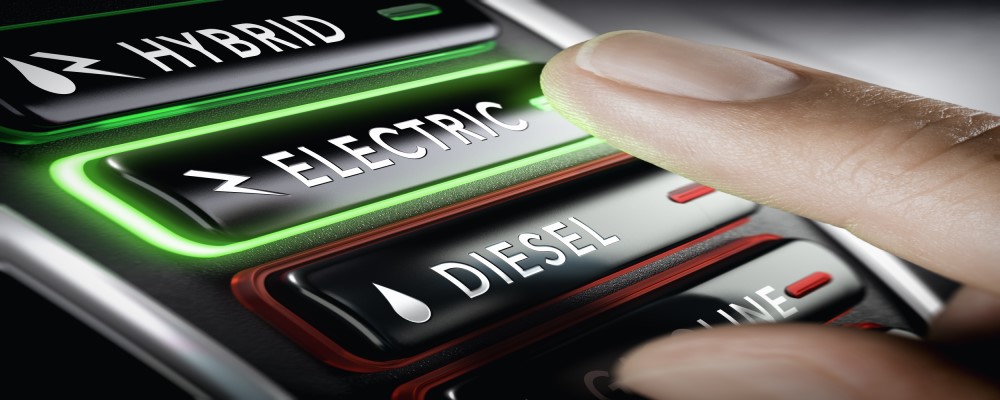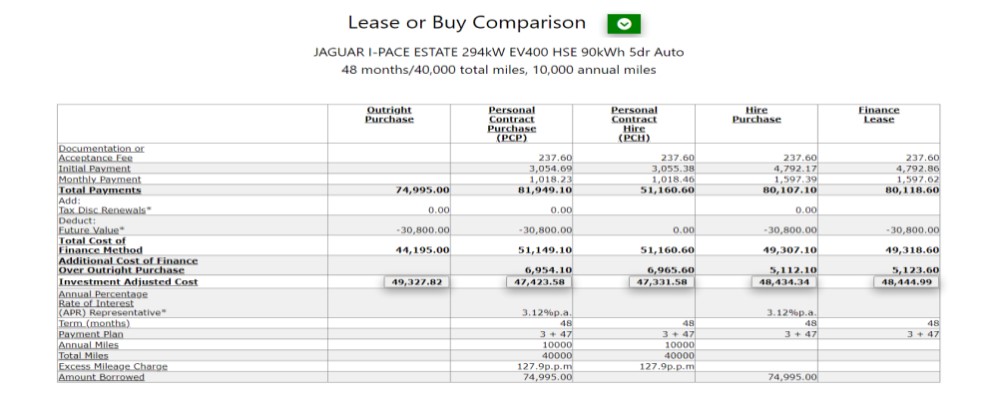The FleetPro Blog: When Is A Hybrid Car Better?
We explain how to get the most from a hybrid
When Is A Hybrid Car Better?

17 September 2020
Would you play tennis with a golf club?
Of course not. And the saying 'horses for courses' isn't just apt because it rhymes.
And yet, just recently, hybrid cars have been the subject of adverse publicity relative to their ecological credentials, despite being created with positive intentions for the environment.
'Misunderstood' might be the polite way of describing how buyers have taken to them for their claimed low emissions and high M.P.G. figures.
In reality what buyers have experienced when driving hybrids hasn't necessarily lived up to all the hybrid hype.
So we're going to explain just how to use a hybrid to get the most out of it, and when an ICE or pure electric car might be better.
What Do Hybrid Cars Do Well?
This part is simple. All the latest types of hybrid car are great for reducing fuel consumption in stop-start traffic and at low speeds around town, where an ICE engine would burn fuel inefficiently whilst in low gears to get away from standing still.
To put that in perspective, for town commuting or the school run, hybrids make an excellent choice because most of those journeys will be short and taken at low speed.
At the opposite end of the journey scale, when a short burst of power is required from the engine mid-range to help overtake, the electric motor in a hybrid will also do the job without adding clouds of particulates to the environment.
When used in this way a hybrid will fulfil its role perfectly - little or zero fossil fuel burned around town and less used when overtaking.
But there's another side to the hybrid coin.
What Don't Hybrid Cars Do Well?
There's a trend in motoring at the moment for buyers to favour SUVs - chunky cars with less than aerodynamic shapes but lots of load capacity, easy access and, sometimes, extra towing capacity or off-road capabilities.
As a result these cars are the reverse of everything that car makers have strived for since the oil crisis of the 1970s (better car aerodynamics with smaller and more frugal engines performing like bigger motors did 30-40 years ago).
Most SUVs move like an elephant on rollerskates, but the car buying public still loves them because of the road-commanding seat position and the ease with which families can be strapped into increasingly bulky child seats that, no way, can be otherwise fitted into the rear benches of minis and super-minis without superhuman contortions.
So as a car manufacturer you put in a petrol engine (smaller, lighter, cheaper to make) and boost it with an electric motor.
Which is fine for the journey to school when the electric motor is spinning and the petrol engine is off.
But when the SUV hits the open road things change. The smaller petrol motor is now straining to shift 2 tonnes of SUV and uses much more fuel, and because it's a petrol engine it produces a lot more CO2.
The small amount of energy stored in a self-charging hybrid's battery is soon used up on the open road and so the car stays in ICE (internal combustion engine) mode.
Worse still, the car is a plug-in hybrid and the driver never bothers to plug it in, and probably keeps the charging cable under the floor of the boot anyway.
As a result the car stays in ICE mode almost permanently and the driver probably only ever enjoys two benefits:
Meanwhile the fuel bills soar and emissions flow from the exhaust.Getting It Right
OK, we've ranted a little about the wrong use of hybrids. So how do you use them properly?
- Mild hybrids - with a battery not much bigger than a normal car and the ability to provide electric motoring only as a temporary boost to supplement the ICE engine (e.g. when accelerating) these cars are only really suited to drivers who enjoy spirited motoring and use the acceleration properties regularly
- Self-charging hybrids - these can run around town on just electric motors and with the batteries topped up continually by recovering energy as the car moves or brakes, so they're suited to town driving like school runs and shopping
- Plug-in hybrids - with bigger batteries recharged by plugging the car into mains electricity, and typically a longer electric-only range, these cars are great commuters when traffic conditions are stop-start, but if you don't plug them in you're wasting fuel, money and time
Driving Style
Hybrids vary the speed at which the car switches from electric drive to ICE depending on your road speed, load and acceleration.
So your driving style and driving environment will affect both how much electric motoring you achieve with a hybrid, how much fossil fuel you save and the extent to which you avoid ICE emissions.
Most motorists understand that if they plant their right foot to the floor then fuel consumption rockets in an ICE car.
Similar principles apply to hybrids and EVs too. The more you push the 'Go' paddle, the more battery power is drained.
And it works exponentially - the faster you go faster, the more the battery depletes and the more you have to rely upon ICE power for your hybrid.
Keep accelerating hard and your battery range will dwindle in a hybrid just as much as your fuel gauge drops in an ICE car.
But back off the accelerator, anticipate road conditions and hybrids/EVs excel in town (and at lower speeds around the country-side). In particular their regenerative powers on braking allow the battery to be recharged as you slow down.
So those who practice restraint with an ICE car should see similar range and recharging benefits from switching to a hybrid or EV if their journeys are around town.
Should You Go Hybrid?
Meet the criteria we've set out above and defninitely 'Yes!'.
You'll save fuel and emissions and help us move a step further away from the forecast climate catastrophe.
But if you can't fit with the profiles above then, seriously, you should go fully electric if your journeys are short or your route is regular and you can get a recharge before heading home.
Outside those criteria, perhaps stick with ICE for the moment (dare we say a modern, fuel efficient and low emission diesel?) and apply a real ice-pack to your conscience as you listen to yet another lecture from environmental experts.
We've put together data on the comparative electric ranges of hybrid cars, plus performance and recharge times for plug-ins and fully electric cars too.
Take a look at our Eco Car Search.
Related Tools
Related Posts
What Else Do We Do?
FleetPro has a unique suite of free online tools to help you find the right car.
Take a look at some of our amazing calculators and decision tools for new car buyers.
-
Lease or Buy?
Could you lease a new car for less than the cost of buying? Our lease calculator will work out the best finance method for you. -
ICE or Electric?
Would an electric car be cheaper than petrol or diesel? Our ICE or electric calculator compares running costs instantly. -
Cash or Car?
Could you give up your company car for a cash allowance? Our 'cash or car' calculator will tell you. -
Car Search
Find your next new car by monthly payment, standard equipment, performance, economy and more .... -
fleetpro.co.uk
Why not visit our fleetpro.co.uk website and see for yourself the amazing range of tools and analysis? We'll keep your place here while you browse.






